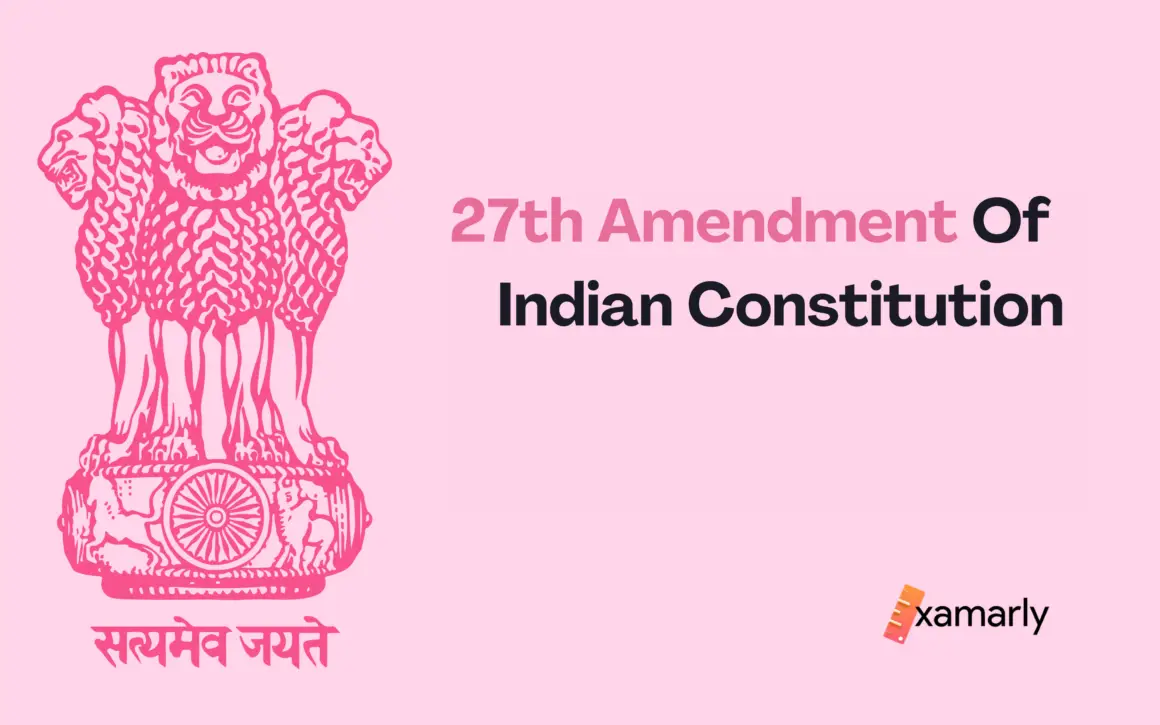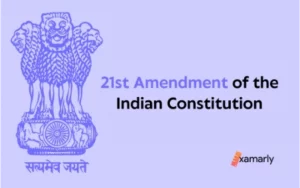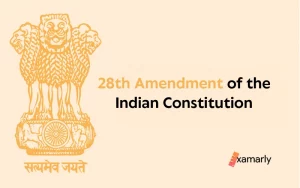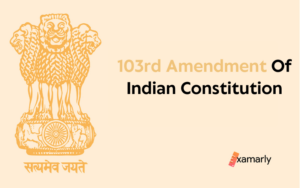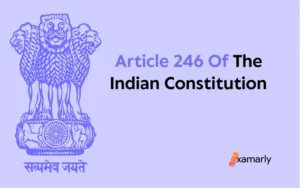The 27th Amendment of Indian Constitution specifically dealt with the re-organization of Mizoram as a Union Territory. In this article, you will read about the details of the 27th Amendment of the Indian constitution including the reasons and the important provisions under the amendment. It will also cover the important date and years associated with the reorganization scheme.
To know more about the impact of the 27th amendment of Indian Constitution on the North Eastern Areas and India’s democratic system, read on.
27th Amendment Of Indian Constitution
The Twenty-Seventh Amendment of the Indian Constitution was introduced on 30 December 1971 and came into effect on 15 February 1972. As a part of this Amendment, provisions were made to reorganize Mizoram into a Union Territory with a legislature and a council of ministers. As a result of this amendment:
- Articles 239A and 240 were amended
- Articles 239B and 371C were added
Objects And Reasons
The primary object and reason the 27th Amendment Act catered to was the reorganisation scheme of North-Eastern India. As a part of this
- Mizoram was to be categorized as a Union Territory. This meant that Mizoram would have a Council of Ministers and a legislature. It is proposed that the Union territory of Mizoram be included in article 239A. Further, Article 240 would be amended to specify the presidential authority over Indian Territories and ARticle 239B would be added to give the authority for ordinances
- The Administrator of a Union territory with a legislature should have the authority to enact ordinances when the legislature is not in session, according to the study team’s recommendations, which were made by the Administrative Reforms Commission on the Administration of Union Territories and NEFA. It is urged to take this suggestion and add a relevant provision to the Constitution granting such an Administrator the authority to enact ordinances (clause 3).
- The President has the authority to enact regulations for the North-East Frontier Agency under article 240 of the Constitution and paragraph 18(2) of the Sixth Schedule. These authorities are expected to be maintained even when the Agency is reorganized to become Arunachal Pradesh’s union territory. Additionally, it is proposed to have equivalent authority over Mizoram, a Union territory (clause 4).
- The Parliament is authorized to provide the President legislative authority over that State by passing a bill under article 357(1) when the legislature of a State is dissolved or its operation is halted by a proclamation under article 356 of the Constitution.
- The Parliament is authorised to provide the President legislative authority over that State by passing a bill under article 357(1) when the legislature of a State is dissolved or its operation is halted by a proclamation under article 356 of the Constitution. Since there is no such clause in place for Union territories with legislatures, any law pertaining to that Union territory must be approved by the Parliament whenever that Union territory’s legislature is dissolved or its operations are halted by an order of the President. It is suggested that the President should be granted the ability to make regulations under article 240 in these situations (clause 4).
- People of Scheduled Tribes predominately live in Manipur’s hilly regions. Section 562 of the Government of Union Territories Act, 1963 provided special provisions for a committee of the Manipur Legislative Assembly made up of members from the Hill Areas to protect their interests. The abovementioned section 52 would no longer be in effect once Manipur, a Union territory, is made a State as part of the reorganization plan. It is suggested to maintain this system even after Manipur becomes a State as part of the plan to provide protection for the residents of the Hill Areas. Consequently, a particular provision is being added to the Constitution to allow for the creation of such a Committee (clause 5).
Important Provisions
Let us briefly look at the specific provisions and changes that the 27th Amendment of Indian Constitution brought forth:
Amendment Of Article 239A
In Article 239A, a slight change was made to the sentence containing “Goa, Daman and Diu, and Pondicherry” by adding the word “Mizoram”. That is, part of Article 239A now became “Goa, Daman and Diu, Pondicherry and Mizoram”.
Amendment Of Article 240
Amendment to Article 240 retained the President’s authority to establish rules for the North-East Frontier Agency even after it has become the Union Territory of Arunachal Pradesh. It gave the President similar authority over the Union Territory of Mizoram.
Addition Of Article 239B
The addition of Article 239B gave the Administrator of a Union Territories with legislature the authority to promulgate ordinances when the Legislature is not in session. After receiving instructions from the President, the power of the Administrator will help issue such an ordinance. The administrator, however, shall not issue ordinances during recess or during any period of any dissolution or suspension of the Legislature.
Addition Of Article 371C
Article 371C deals with Manipur and the suitable provisions and special responsibilities related to its administration. The proclamation under Article 371C authorizes the President to arrange for the formation and functions of a Committee of Legislative Assembly of the State of Manipur which is made up of members of that Assembly elected from the State’s Hill Areas. The purpose is to guarantee that changes are made to the Government’s rules of business and the rules of procedure of the State Legislative Assembly, and the Governor is responsible for the appropriate operation of such a committee.
Conclusion
The 27th Amendment of Indian Constitution is a constitutional amendment that dealt with the scheme of reorganization and the changes it brought across North-Eastern India. This is one of the major amendments passed by the Parliament of India. Articles in pursuance deal specifically with the ruling of the North-Eastern areas. The legislative powers and executive powers pertaining to these areas were discussed in this Article. This comprehensive amendment article is all you need to know about the 27th Amendment.
FAQs On 27th CAA
When Did The 27th Amendment Get Introduced?
The Twenty-Seventh Amendment of the Indian Constitution was introduced on 30 December 1971.
When Did The 27th Amendment Get Enacted?
The 27th Amendment of Indian Constitution came into effect on 15 February 1972.


